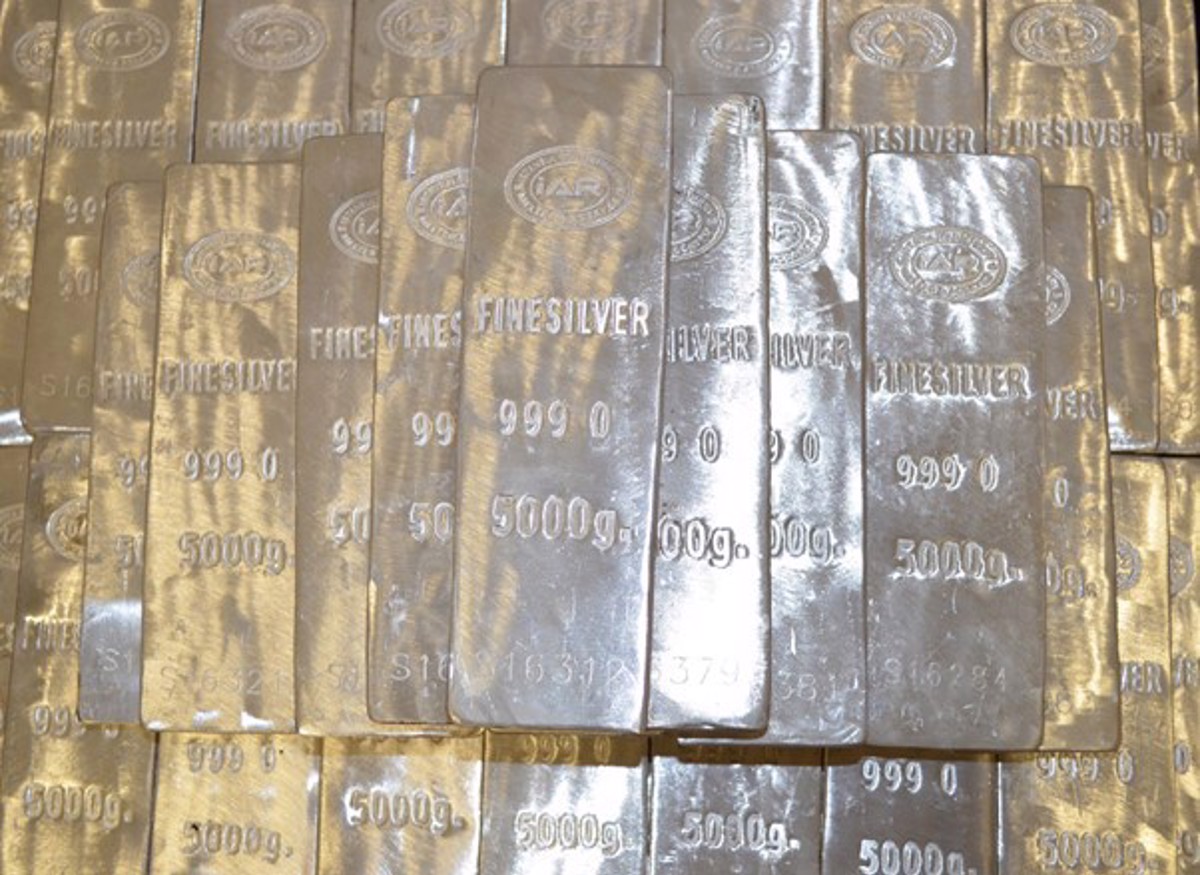Will silver soon be rarer than gold?

It is estimated that mankind has mined almost one and a half million tons of silver during its existence. That's the amount that would make a cube the height of the American Statue of Liberty. Sometimes it is even recycled, but somehow it is still not enough. It is used in the electrical industry, in the production of CDs and DVDs, in the photographic industry, in the medical-technical field and in other and other fields. In addition, it is irreplaceable thanks to its unique properties.
Don't overlook: There is no coin like a coin
We know of no other metal that conducts electricity and heat so well. It also reflects light the best, can be used as a catalyst in many ways, is malleable, repels bacteria... From 1 kilogram, you could make a wire two kilometers long, which would also remain strong and malleable. All things considered, silver for rings and earrings is actually almost a shame.
But if you have any, keep them. You might make money from them one day. Until 1717, the countries of the world used silver and, of course, gold to cover banknotes, but this is no longer the case today. In a situation where the world consumes much more silver than it mines, this metal is actually quite logically undervalued, and in the event of a collapse of paper money, its price could shoot up to five times.
Economically disadvantageous mining at huge depths
It probably won't even surprise you that silver mining isn't exactly easy either. You would definitely be much more likely to come across gold in nature than pure pure silver. And there is no possibility of meeting a silver nugget somewhere. These are formed only in the upper layer of the ore deposit. In other words, you'll only find them in brand new mines. Considering that most European silver deposits have been known since the Middle Ages, sometimes even since ancient times, you would rather win a billion in the lottery than stumble upon a silver nugget here.
Even on the American continent, where there are currently probably the richest deposits, something like this is extremely unlikely. Pure silver mostly crystallizes as fine fluff in rock cavities. Sometimes it looks like a twisted wire, a lump or a patch, but most often fine crystalline threads create shapes reminiscent of a tangle of roots, moss, fern, a tuft of grass or a tree branch.
It is mined at record depths and, in addition, the overwhelming majority consists of silver minerals in which it combines with other elements. It can be found most often in the company of sulfur, arsenic, lead, copper, sometimes even gold. All this complicates its acquisition and increases costs. Excess mining of the mentioned ores also moves their prices. In short, silver mining is the economic equivalent of walking a tightrope over an abyss.
Czech silver mining is closely connected with our minting
Currently, the vast majority of silver is imported to our continent, but it has not always been this way. One small country in the heart of Europe could tell about it. Celts already mined silver on our territory, they used it to make their money. However, the first and oldest Czech mine was established in 1188 in the Tachovská region, in a town that is still called, very characteristically, Stříbro.
Despite this very suggestive name of the town, most Czechs associate the beginning of silver mining in the Czech lands with Jihlava. No wonder. They discovered the deposits there in the 13th century and it made the region famous and turned it into a center for colonizers. The city was elevated to royal status and, of course, coins were also minted there. However, the surface deposits were quickly exhausted and it would be much more expensive to mine ores from greater depths, so local mining was gradually abandoned.
In addition, at the end of the 13th century, silver fever broke out elsewhere: Miners from all corners of the country, even from Germany, came to Kutná Hora. They established mines completely without a plan or thought, only depending on where the silver veins led.
A third of European silver came from us
You may be interested in how new sites were actually searched for in the Middle Ages. The vast majority of such finds were purely accidental: the silver metal shone, for example, on a stone during plowing, after lightning struck a rock or in a river. Specifically in the case of Kutná Hora, however, the greatest experts in silver discovery were the local Cistercian monks. They knew where to dig based on the types of plants and trees that grew above the site.
When Prince Wenceslas II. in 1300 he abolished all Czech mints and transferred the minting of money to the Kutnohorsk Vlašské dvor, he also introduced the Prague gros, which was, at least in its beginnings, a pan-European recognized, strong and valuable currency. At that time, up to 55 kilograms of silver were mined in Kutnohorsk per day, i.e. a full third of European production at the time. Unfortunately, as with other forms of currency from the rough beginnings of Czech coinage, not even the grosz kept its quality forever.
An unshakable reputation for purity and perfection was eventually won by another coin in our country, which was also minted from silver, which had already been obtained elsewhere - in the Jáchymov mines. It was our famous tolar that conquered the world.
Czech silver mines were breaking records relatively recently
The Czechs grabbed another interesting first in the world regarding silver, but that happened centuries later. In the year
 čeština
čeština
 slovenčina
slovenčina
 english
english
